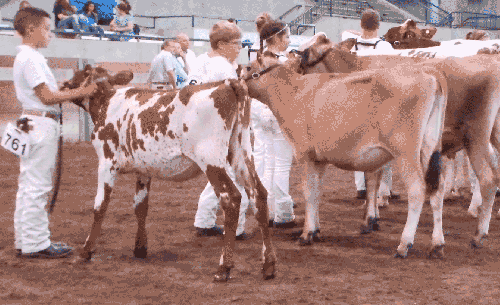Curious how much milk the average dairy cow produces each day?
Dairying has come a long way since every family had a cow or two! If you want to be part of the dairy industry of the future, you have to prepare yourself for all phases of dairy technology. In a 4-H dairy cattle project, you’ll explore the technology related to the production, manufacturing and marketing of dairy products, and learn about scientific dairy research and related agribusinesses.

Agriculture is a big player in Michigan’s economy and future prosperity—and dairy is an important part of agriculture. Working on 4-H dairy projects could do more than get you a ribbon at the county fair. It could give you a start on a great career!
Contact
For more information on how to get involved as a youth or volunteer, contact your county MSU Extension office or,
Kendra Van Order, 4-H Dairy Cattle Extension Educator
Email: vanorde4@msu.edu
MSU Department of Animal Science
Web: http://www.ans.msu.edu/
News
-
Trattles named 2025 Michigan 4-H Animal Science Adult Sportsperson of the Year
Published on December 15, 2025
St. Joseph County 4-H leader Steve Trattles wins prestigious sportsmanship award for his leadership in 4-H animal science projects. -
Bargy named 2025 Michigan 4-H Animal Science Youth Sportsperson of the Year
Published on December 11, 2025
Antrim County 4-H member Wyatt Bargy wins prestigious sportsmanship award for his involvement in 4-H animal science projects. -
Checklist to prepare 4-H animal project facilities for winter weather
Published on November 25, 2025
Ten items to check for and do before winter weather arrives when you have or are getting 4-H animal projects. -
Steps to developing a Veterinarian-Client-Patient Relationship
Published on September 18, 2025
Be prepared for the unexpected when raising animals by developing a VCPR. -
How to make a quality impression for dairy beef showmanship
Published on August 18, 2025
Learn how to make a quality impression for dairy beef showmanship with these basic tips.








 Print
Print Email
Email